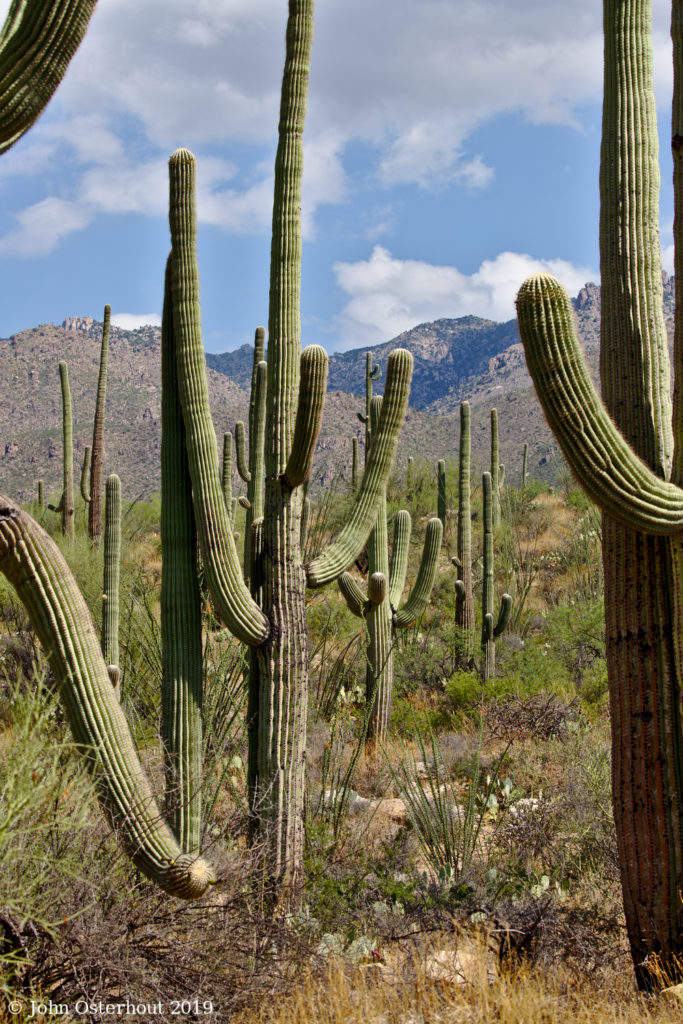
Here are some saguaro cacti in the Sabino Canyon Recreation Area in Tucson, Arizona. I took this shot during a trip to Tucson in 2019. Saguaros are native to the Sonoran Desert in Arizona, parts of southeast California, and the Mexican state of Sonora. They aren’t native to Texas. I live in San Angelo, which is near the center of Texas. San Angelo is likely 650 miles from the nearest Saguaro cactus (Unless some J. Fancy Richboy III, has imported some to decorate his manse…). For you northeasterners, that’s about the distance from Boston to Detroit. Saguaros are cool. But they don’t have anything to do with Texas.
Which brings us to…
Pet Peeve
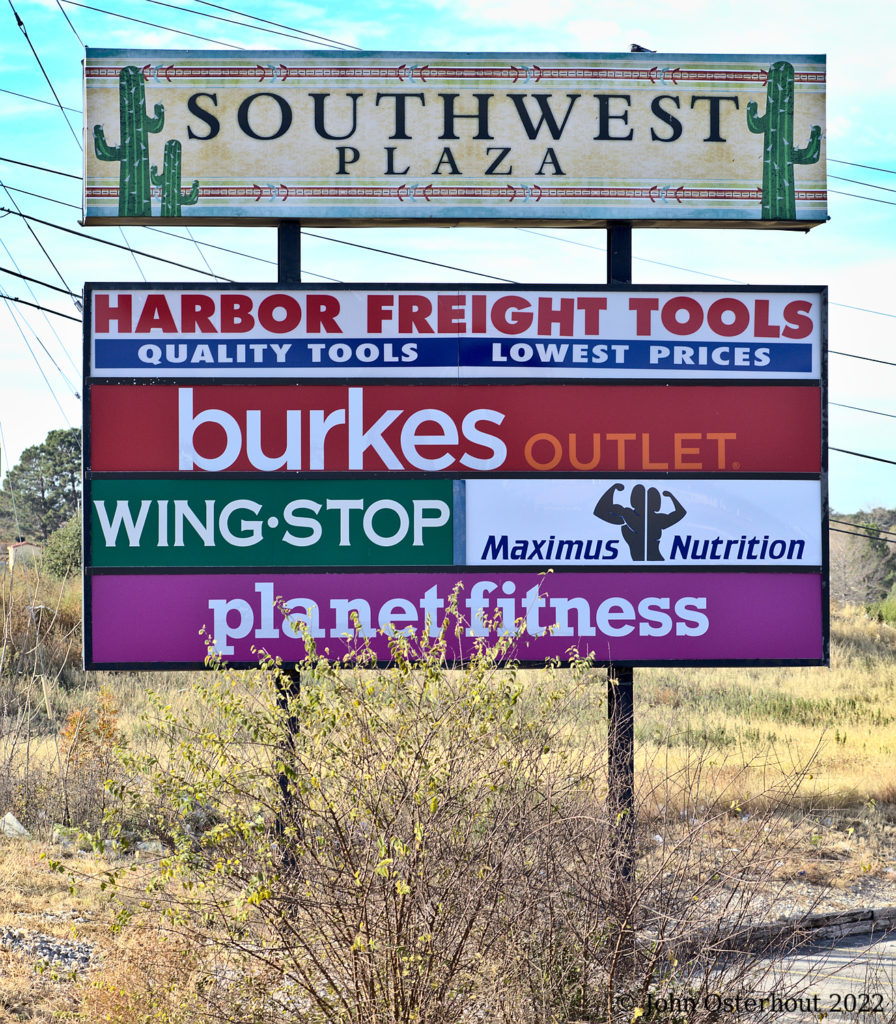
Here is the sign for the Southwest Plaza in San Angelo. Southwest Plaza is your generic small town America strip mall. There are a variety of business establishments. Even some that I frequent.
My pet peeve is that they are using saguaro cactus on their sign. As mentioned above, saguaro cacti don’t grow around here and you’d be hard-pressed to find one in the entire 269,000 square miles of Texas. So why use them on your sign? Certainly, this is the Southwest Plaza and saguaros grow in the Southwest. Just not in the Southwest anywhere near San Angelo.
I’ve seen many T shirts advertising things Texan using saguaros as a logo. This represents a lack of forethought on the part of the shirt designers. Far from being cool, saguaro logos on Texas things are just wrong.
If you are going to use a cactus on your logo, sign, shirt, or mural, why not use…
Prickly Pear Cactus
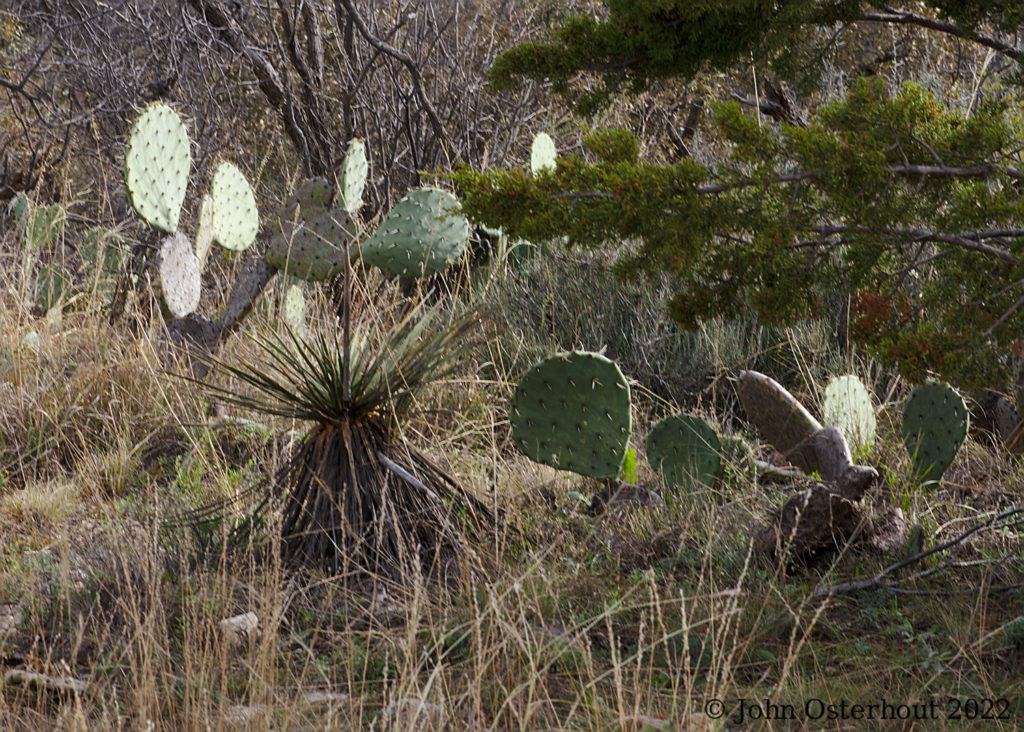
These prickly pear cactus live in San Angelo State Park. They are not uncommon. That is to say, they are everywhere. Not just in the state park, but all over the state. Texas is home to over a hundred species of cactus, including a number of varieties of prickly pear.
This being West Texas, there are number of businesses in town with cactus-themed names. What follows is a short exploration of the cactus about town.
This Cactus is Angry
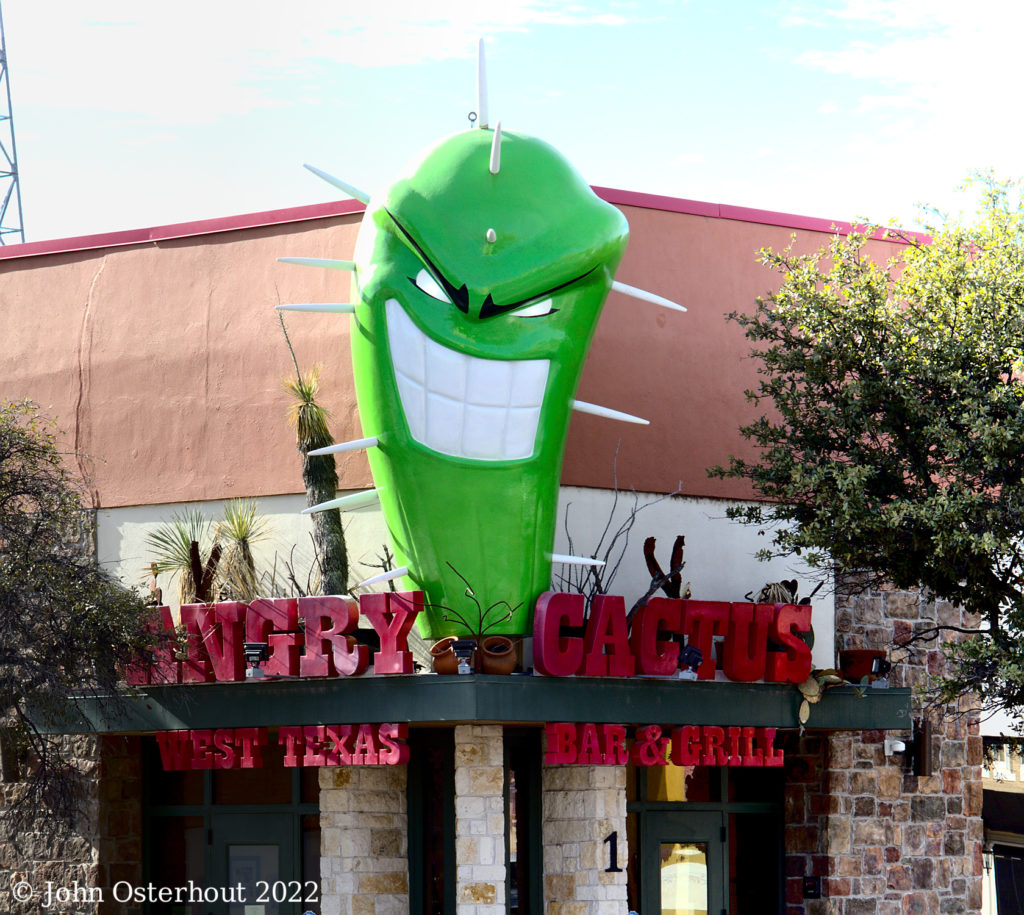
This cactus is rocking the sign of the Angry Cactus, a West Texas Bar & Grill. I’ve eaten there. The food and atmosphere are good. Two thumbs up.
Although it’s easy to see that the cactus is angry (or maybe constipated), it is difficult to tell what sort of cactus this is supposed to represent. It doesn’t seem be a saguaro, due to the lack of arms. However, saguaro cactus don’t grow arms until they are 75 or so years old. Maybe this is a young, angry saguaro. Or perhaps an organ pipe cactus, or a thinish barrel cactus… or not. Angry is the operative characteristic here.
Cactus Laundromat
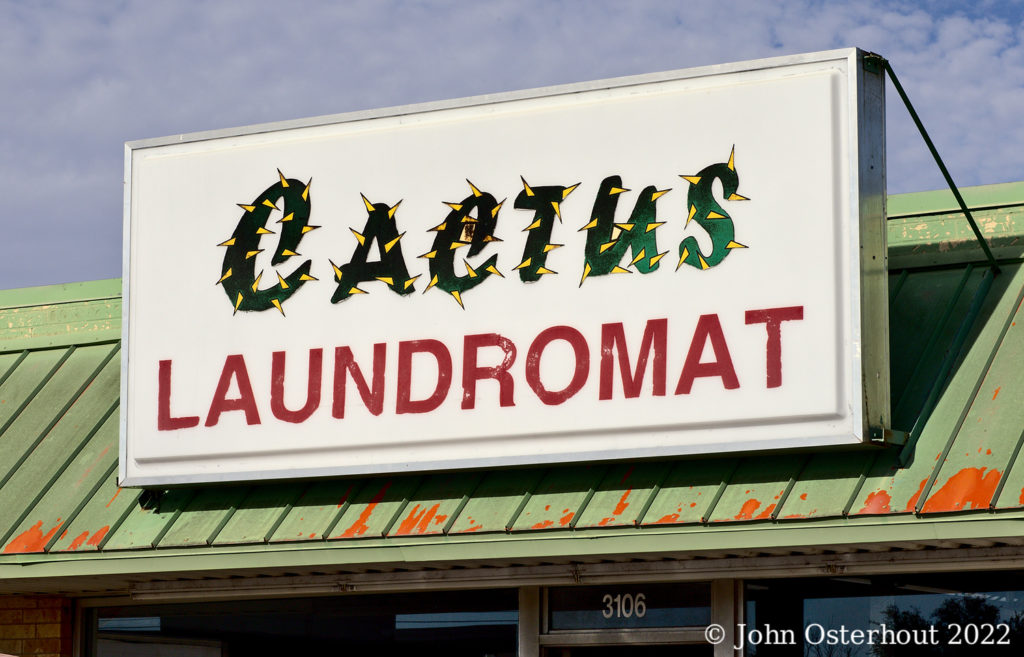
I’m not sure if the Cactus Laundromat sign is intended to represent a specific kind of cactus, but it certainly gets points for being prickly!
Cactus Bookshop

The Cactus Book Shop gets major snaps for using a prickly pear cactus in its logo. The Cactus Book Shop is owned and operated by Felton Cochran, who has been been a serious bookseller since 1995 and a serious collector of Texana for many years before that. Felton specializes in Texana/Western Americana and Elmer Kelton Books. Kelton was an award-winning writer of western books who lived in San Angelo for many years. There is a statue of Elmer in the downtown Tom Green County Library. Someday I might get motivated to go down there and photograph the statue.
I bought a first edition and some Elmer Kelton books from Felton once. I can attest that his shop is very cool. This is a “must see” if you ever visit San Angelo.
Cactus Hotel
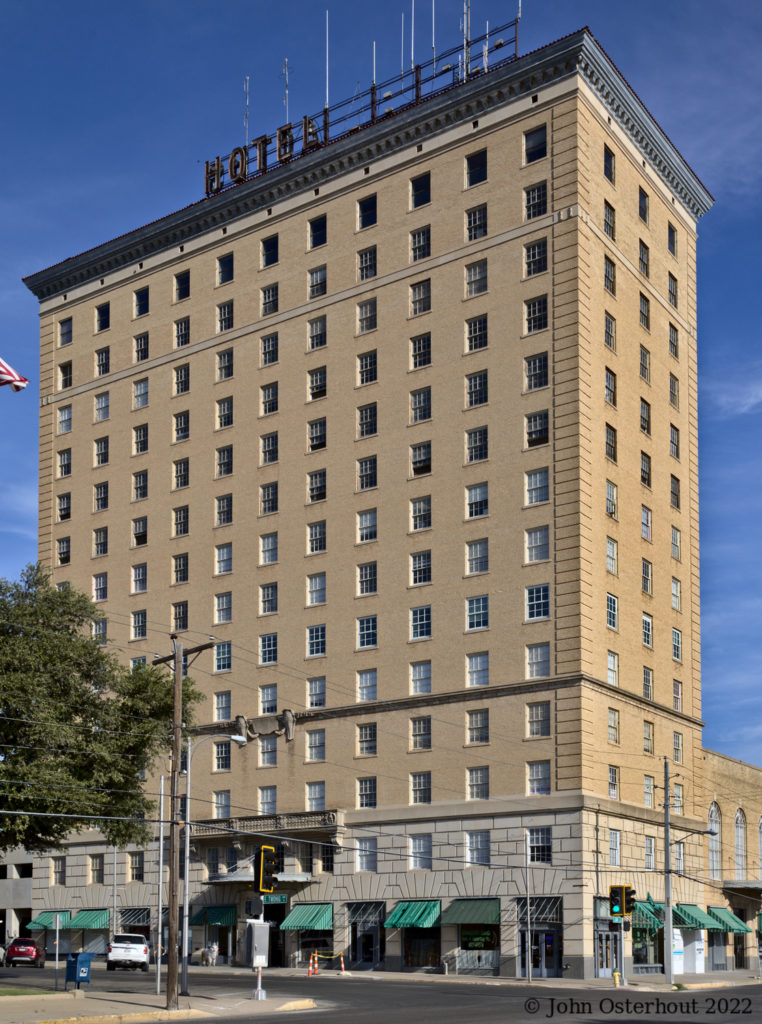
Here is the Cactus Hotel. It opened Friday, May 31, 1929 as the Hilton Hotel1. It was the fourth of Conrad Hilton’s chain of hotels (after Dallas, Abilene, and Waco). Conrad Hilton had some cash flow problems thanks to the Great Depression and his proclivity for over extension. The Hilton Hotel was sold to the Moody organization in 1934 and operated as one of Moody’s Affiliated National Hotels.
A contest was held to rename the hotel. Lela Verge Sanders won with her entry of the “Cactus Hotel.” For her efforts, she received $25.
The Cactus Hotel was operated as a hotel until 1962, when it was bought by the Baptist Memorial Geriatric Hospital Board and became the Hotel Cactus, A Moody Memorial Retirement Center. It was operated as a hotel and retirement center until 1983 when a fire in a basement linen closet called attention to copious fire code violations and the Cactus Hotel was closed on April 26, 1983.
The Cactus was sold again in late 1983 but renovation costs proved too expensive and the hotel remained closed. The hotel was purchased in 1992 by the Historic City Center Project, slowly remodeled and reopened for apartments and offices.
In 1984 it was accepted into the National Register of Historic Places. At fourteen stories, it is the highest building in San Angelo.
You can no longer book rooms at the hotel. However, the Cactus Hotel does host events and weddings in some beautiful rooms. I’ve attended some functions at the hotel. The lobby and the ballroom are breathtaking.
If you look closely, just to the left of the main entrance, you can see a sheep. You may have to squint. The sheep is the whitish object between the telephone pole and the traffic light. Here it is a little bigger:
Cactus Blossom
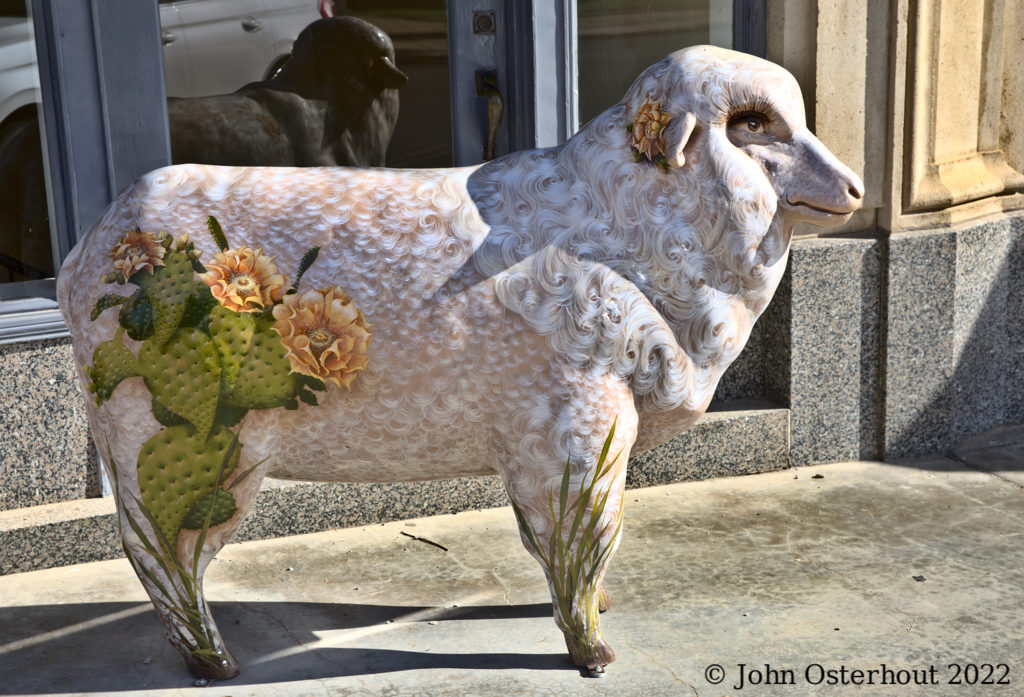
This is Cactus Blossom, one of San Angelo’s iconic sheep. (See also the Sheep Spectacular and the Sheep Brochure.) The sheep tradition started in 2007 when the promotions committee of Downtown San Angelo, Inc, decided it would be easier to deal with painted fiberglass sheep than to reorganize the Miss Wool of Texas Pageant.
Local businesses and organizations purchase a fiberglass sheep through Downtown San Angelo, Inc. and hire a local artist to decorate it. Cactus Blossom was painted by Laurel Dane. I show Cactus Blossom because the artist has, rightfully to my sensibilities, chosen to decorate the sheep’s rump with prickly pear blossoms. A good Texas sheep. The cactus blossom behind the ear is a nice touch.
Hilton Hotel/Cactus Hotel/Hotel Cactus
Here is a decoration from above the main entrance:
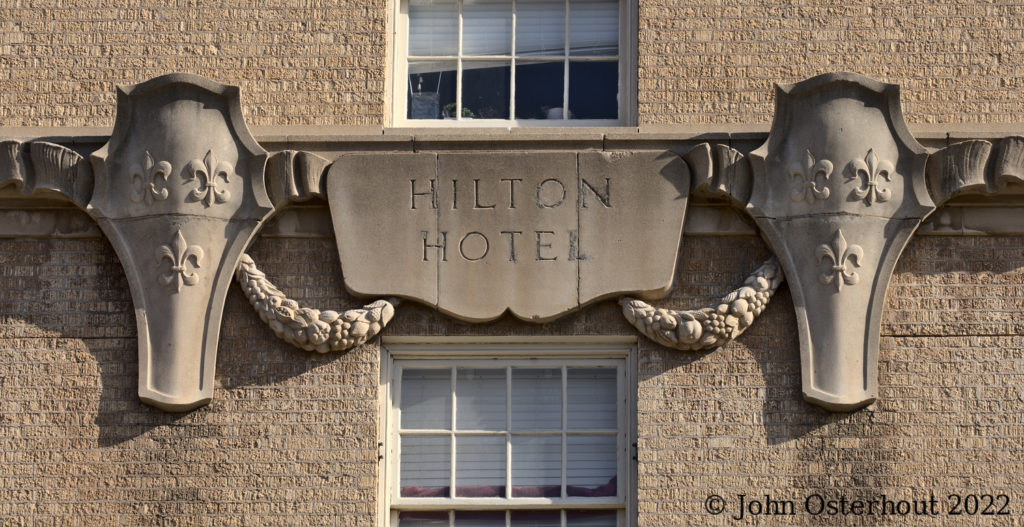
The hotel was originally the Hilton Hotel and had a huge sign on the roof in letters twelve feet high that said “Hilton Hotel.” I saw an old photograph of this sign. In 1934, the Hilton Hotel was renamed the Cactus Hotel. But what did the rooftop sign say? Virginia Nolke’s book1 wasn’t any help.
In the photo you can make out “HOTEL” on the sign. On the other side of HOTEL seems to be “ACTUS.” This suggests that the sign once said “HOTEL CACTUS”. I was able to find a photograph of what looks like an old postcard that does indeed say “HOTEL CACTUS”. I also saw reproductions of invitations that said “Hotel Cactus”. So after the hotel was sold was the sign changed to “HOTEL CACTUS” and, if so, why not “CACTUS HOTEL? If I find out, I’ll let you know.
1 Nolke, Virginia. A History of the Cactus Hotel. San Angelo Cultural Affairs Council, 1996.
Most of the information about the Cactus Hotel came from this book. For you locals: the book is available at the Porter Henderson Library at Angelo State University.